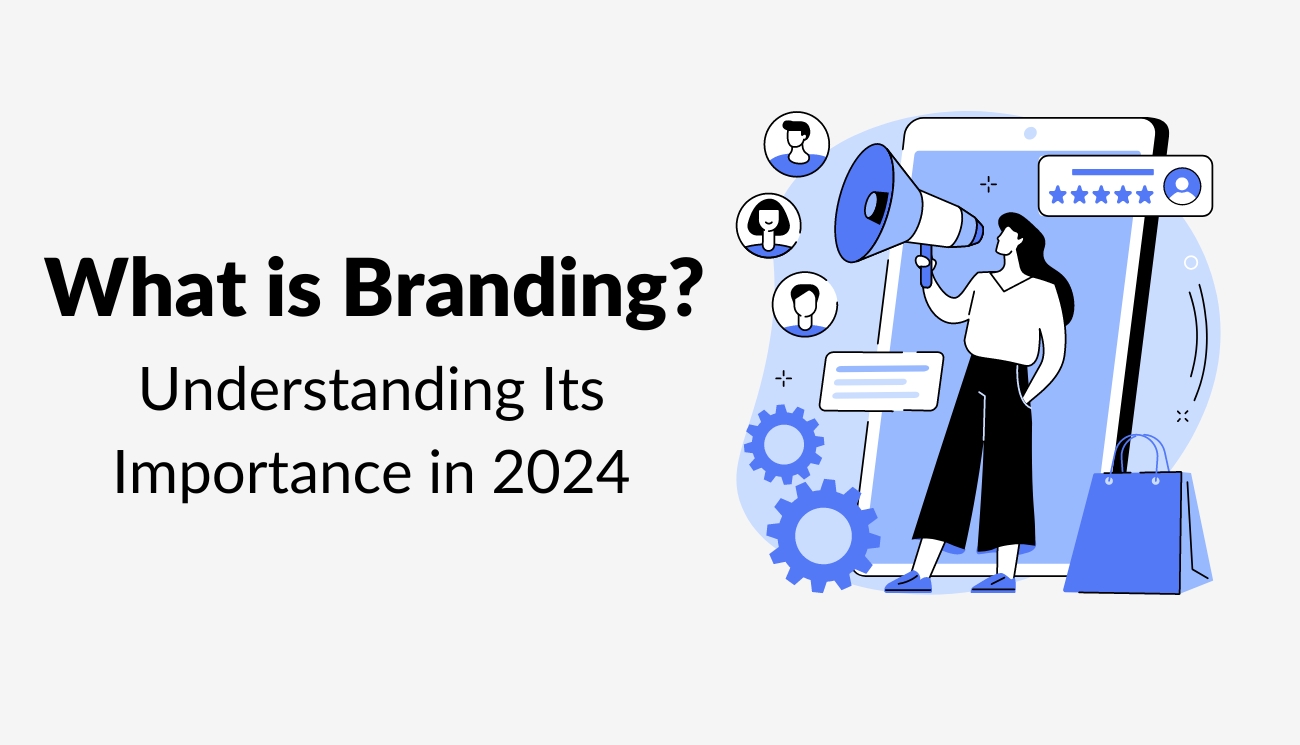
Small buisness branding strategies your audience will love
To truly stand out, your small business needs a strong brand. But what exactly is branding, and why is it so important?
Branding is the identity and story of your company. It’s what sets you apart from your competitors and creates a lasting impression on your customers. It’s the feeling people get when they interact with your business, whether it’s through your website, social media presence, or in-person interactions.
Here are just a few reasons why branding is essential for small businesses:
- Increases brand awareness: Branding helps people recognize and remember your business. When you have a strong brand, you’re more likely to be top-of-mind when customers are making purchasing decisions.
- Builds trust and credibility: A strong brand tells customers that you’re a legitimate and trustworthy business. It shows that you care about your products or services and that you’re committed to providing a positive customer experience.
- Creates emotional connections: Branding can evoke emotions in customers, which can lead to stronger brand loyalty. When customers connect with your brand on an emotional level, they’re more likely to become repeat customers and advocates for your business.
- Supports your marketing efforts: A strong brand makes your marketing efforts more effective. When your brand is consistent across all channels, it creates a clear and memorable message that resonates with your target audience.
- Attracts and retains talent: A strong brand can help you attract and retain top talent. Employees wan,t to work for companies that they’re proud of, and a strong brand can help you create a positive company culture that attracts talented individuals.
Now that you understand the importance of branding, let’s dive into how you can create a strong brand for your small business.
Step 1: Define Your Brand Identity
The first step in building a strong brand is to define your brand identity. This includes your brand’s mission, vision, values, and personality.
- Mission: Your mission statement is a brief statement that describes your company’s purpose and why you exist.
- Vision: Your vision statement is a statement that describes your company’s long-term goals and aspirations.
- Values: Your values are the core principles that guide your company’s decisions and actions.
- Personality: Your brand personality is the way your brand communicates with its audience. It’s the tone of voice you use in your marketing materials and the way you interact with customers.
Step 2: Know Your Target Audience
Once you’ve defined your brand identity, it’s important to understand your target audience. Who are you trying to reach with your brand? What are their needs, wants, and pain points?
Here are some questions to help you understand your target audience:
- Who are your ideal customers?
- What are their demographics (age, gender, income, etc.)?
- What are their needs and wants?
- What are their pain points?
- Where do they get their information?
Step 3: Develop Your Brand Voice
Your brand voice is the way your brand communicates with its audience. It’s the tone of voice you use in your marketing materials, on social media, and in customer interactions.
Your brand voice should be consistent with your brand personality. For example, if your brand personality is friendly and approachable, your brand voice should be warm and inviting.
Here are some tips for developing your brand voice:
- Consider your target audience. What kind of language will resonate with them?
- Be clear and concise. Get your message across without using jargon or technical terms.
- Be authentic. Let your brand personality shine through in your voice.
- Be consistent. Use the same brand voice across all channels.
Step 4: Create Your Visual Identity
Your visual identity is the visual representation of your brand. This includes your logo, colors, typography, and imagery.
Your visual identity should be consistent with your brand personality and values. For example, if your brand personality is professional and sophisticated, your visual identity should be clean and modern.
Here are some tips for creating your visual identity:
- Keep it simple. A complex logo or color scheme will be difficult to remember.
- Use high-quality visuals. Your visuals should be professional and visually appealing.
- Be consistent. Use your brand colors, fonts, and imagery consistently across all channels.
Step 5: Build Brand Awareness
Once you’ve developed your brand identity, it’s time to start building brand awareness. This means getting your brand in front of your target audience.
There are a variety of ways to build brand awareness, including:
- Content marketing: Create high-quality content that is informative and valuable to your target audience. This could include blog posts, articles, infographics, videos, or social media posts.
- Social media marketing: Use social media to connect with your target audience and promote your brand. Share your content, run social media ads, and participate in conversations.
- Public relations: Get your brand mentioned in the media. This could include press releases, media pitches, or guest blogging.
- Networking: Attend industry events and network with other professionals. This is a great way to get your brand in front of new people.
- Advertising: Consider paid advertising options, such as online advertising, print advertising, or broadcast advertising.
Step 6: Measure Your Results
It’s important to track your progress and measure the results of your branding efforts. This will help you see what’s working and what’s not.
There are a number of metrics you can track, such as website traffic, social media engagement, brand awareness, and sales.
By tracking your results, you can make adjustments to your branding strategy as needed.
Building a strong brand takes time and effort, but it’s an investment that will pay off in the long run. A strong brand will help you attract and retain customers, build trust and credibility, and achieve your business goals.



